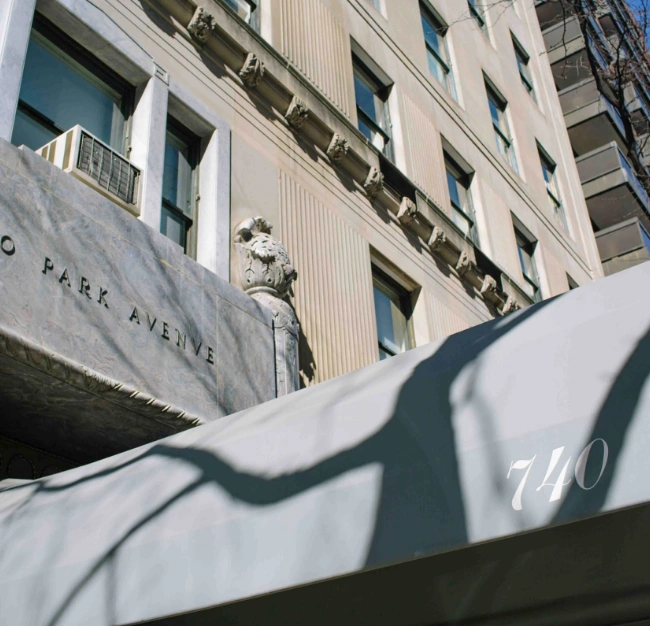
Mole Removal
Moles, those small, often benign skin growths, can vary widely in appearance and location across the face and body. While some individuals embrace their moles as part of their unique identity, others may find certain moles uncomfortable or unsightly. Opting for cosmetic mole removal is a deeply personal decision—one that can significantly impact self-confidence and overall quality of life. Whether it’s to address discomfort, enhance aesthetics, or alleviate concerns about potential health risks, expert mole removal by Dr. Stafford Broumand in New York City offers a safe and effective solution tailored to individual preferences and goals.


What Is Mole Removal?
Mole removal is an outpatient procedure aimed at removing benign moles from the skin for cosmetic reasons. Whether for appearance enhancement or to alleviate concerns about potential health risks, Dr. Bromand is a board-certified plastic surgeon who ensures a safe and effective process tailored to your unique needs from the comfort of our luxurious office centrally located in New York City’s Upper East Side. Abnormal or unsightly moles can generally be excised in a brief and straightforward office procedure performed using local anesthesia.
Types of Moles
Moles, medically known as nevi, can manifest in various shapes, sizes, colors, and textures across the surface of the skin. Understanding the different types of moles can help individuals make informed decisions about their removal. Here are some common types:
- Common Moles (Nevi): These moles are typically small, round, and brownish in color. They often appear during childhood and adolescence, and while they are usually benign, they should be monitored for any changes.
- Atypical Moles (Dysplastic Nevi): Atypical moles are larger than common moles and may have irregular borders, varied colors, and uneven surfaces. While most are harmless, they have a slightly higher risk of developing into melanoma.
- Congenital Moles: Congenital moles are present at birth and can vary significantly in size and color. Large congenital moles may require early intervention for medical reasons.
- Halo Moles: Halo moles are characterized by a pale ring or halo surrounding the mole. This phenomenon occurs when the body’s immune system attacks the pigment cells within the mole, resulting in the loss of pigment.
- Spitz Nevi: Spitz nevi are typically pink, red, or brown and can resemble melanoma in appearance. While they are usually benign, they may require removal for diagnostic purposes or if they cause cosmetic concerns.
- Acquired Moles: Acquired moles develop throughout life and can vary in size, shape, and color. While most acquired moles are harmless, any changes in size, shape, or color should be evaluated by a dermatologist.
Understanding the characteristics of different types of moles can help individuals assess their risk factors and make informed decisions about mole removal and skin health management.

Preparing For Mole Removal
Before undergoing cosmetic mole removal, it’s crucial to consult with a dermatologist to rule out any potential skin cancer concerns, such as melanoma. Dermatologists can evaluate moles for signs of malignancy, including irregular borders, changes in color or size, and other suspicious characteristics. If necessary, they may recommend a biopsy of the lesion to determine if it’s cancerous. This step ensures that any cancerous moles are addressed promptly and appropriately, prioritizing both your health and cosmetic goals.
Once a patient is deemed a candidate for cosmetic mole removal, the process involves several steps aimed at ensuring a smooth procedure and optimal outcomes. Before your mole removal appointment, you’ll have a consultation with Dr. Broumand to discuss your goals, medical history, and any concerns you may have. During this consultation, Dr. Broumand will thoroughly evaluate the mole(s) to determine the most appropriate removal technique tailored to your needs. Additionally, depending on your medical history, you may need to avoid certain medications or supplements that could heighten the risk of bleeding during the procedure.

Mole Removal Surgery
During the mole removal procedure, Dr. Broumand employs advanced mole removal techniques to safely and effectively remove unwanted moles while minimizing scarring. This typically involves administering local anesthesia for comfort, utilizing surgical excision, laser therapy, or other appropriate methods for complete removal of the mole(s), and then closing the incision with fine sutures to promote optimal healing.
Mole Removal Recovery
Following mole removal, it’s essential to adhere to post-procedure care instructions provided by our team. During the recovery process, no downtime is required but most patients can expect mild discomfort and swelling for a few days, which can be managed with over-the-counter pain medication. It’s important to avoid sun exposure to protect the treated area from pigmentation changes and optimize healing. Additionally, attending follow-up appointments as scheduled is crucial to monitor healing progress and address any concerns promptly.
Is mole removal painful?
While you may experience some discomfort during the procedure, we use local anesthetic on the entire mole and surrounding skin to ensure minimal pain.
Will there be scarring after mole removal?
Regardless of the mole removal method, move removal can
Trusted Source
Moles
Mayo Clinic
Go to Source
cause scars.
However, Dr. Broumand employs techniques to minimize scarring, and any scars that do occur typically fade over time.
How long does it take to recover from mole removal?
Recovery time varies depending on the size and location of the mole, but most patients can resume normal activities within a week and are fully healed in
Trusted Source
Mole Removal
Cleveland Clinic
Go to Source
2-3 weeks.
Are there any risks associated with mole removal?
Like any surgical procedure, there are potential risks, but Dr. Broumand takes measures to minimize them and will discuss these with you during your consultation.
Do you also do skin tag removal?
Yes, we also offer skin tag removal services. While skin tags are typically harmless, they can be bothersome or cosmetically undesirable for some individuals. Dr. Broumand can safely and effectively remove skin tags using various techniques, tailored to each patient’s unique needs and preferences.

Schedule A Consultation For Mole Removal
At 740 Park Plastic Surgery in Manhattan, New York, your safety and satisfaction are our top priorities. Trust our expertise for your mole removal needs, and reclaim your self-confidence. Contact us to schedule your consultation today!
1 Mayo Clinic. Moles. Available: https://www.mayoclinic.org/diseases-conditions/moles/diagnosis-treatment/drc-20375204. Accessed March 22, 2024.
2 Cleveland Clinic. Mole Removal. Available: https://my.clevelandclinic.org/health/treatments/23312-mole-removal. Accessed March 22, 2024.
Dr. Stafford Broumand has reviewed and approved this content.
Page Updated: